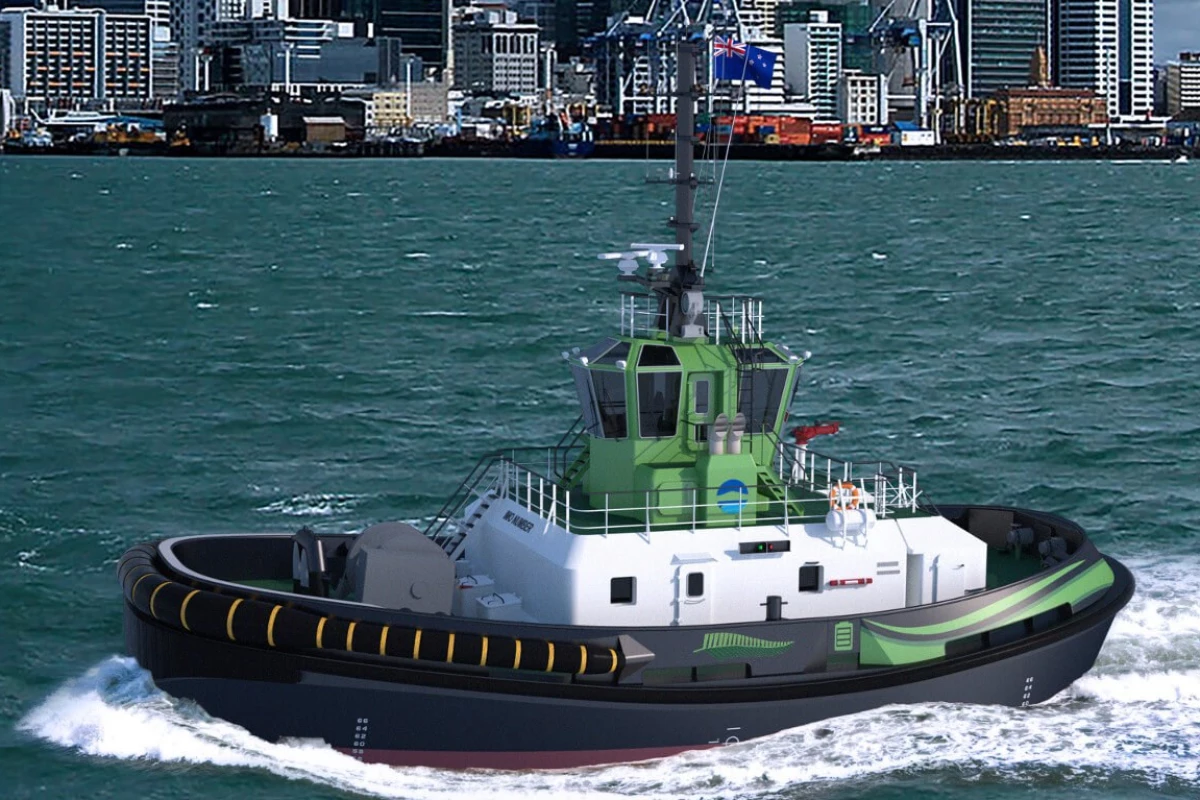As part of its climate change initiative, New Zealand's Ports of Auckland has agreed to buy the world's first full-size electric port tug from the Damen Shipyards Group. The RSD-E Tug 2513 is expected to match the pulling power of the Ports of Auckland's best diesel tug, but will do so without belching diesel fumes into the air.
"In 2016 we set ourselves the goal of being zero emission by 2040," said Tony Gibson of the Ports of Auckland. "We set this goal because we recognize that urgent action is needed on climate change, and we wanted to be part of the solution. However, setting that goal created a tough challenge. We have a lot of heavy equipment, like tugs, and in 2016 there were no zero emission options."
The best option at the time was a hybrid port tug solution, but the port kept looking and has now signed a contract with Damen that will see the delivery of the battery-electric RSD-E Tug 2513 in 2021. It will have the same 70 tonne bollard pull capabilities as the port's best diesel tug, which was also built by Damen and consumes 120 liters of diesel per hour.
The battery-electric port tug will have dimensions of 6 meter draft and a length of 24.73 m (19.68 x 81.13 ft), have two azimuth thrusters with 3 m (9.8 ft) diameter props and will be able to move three to four ships per charge of its 2,800 kWh batteries, or three to four hours of operation. A fast charge is expected to take around two hours. Damen is also working on the supply of the 1.5 MW charger, that's based on proven technology from the automotive sector.
The initial cost of the battery-electric tug is reported to be roughly double that of a diesel tug, but it costs significantly less to operate and maintain.
"Commissioning the world's first fully electric large tug represents a strong commitment by Auckland and its port to reducing carbon emissions and achieving our carbon zero target," added Auckland Mayor Phil Goff. "It's great for the environment, reducing pollution in the city center and cutting back carbon emissions. The life of the tug is around 25 years. By going electric now, we save 25 years of diesel pollution and a net reduction in costs of around NZD 2.5 million because it is so much cheaper to operate."
For safety reasons, the RSD-E Tug 2513 will also be fitted with two 1,000 kW back-up diesel generators, but Ports of Auckland stress that these are only going to be used in the event of an electrical systems failure.
The video below has more.
Sources: Ports of Auckland, Damen Shipyards




